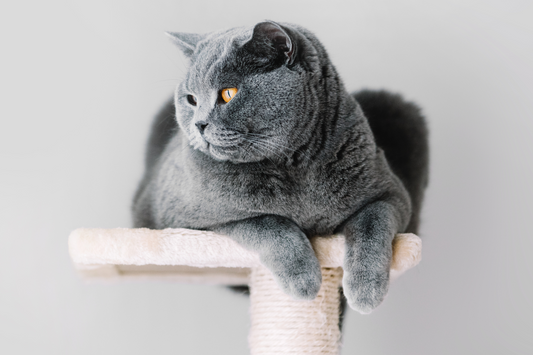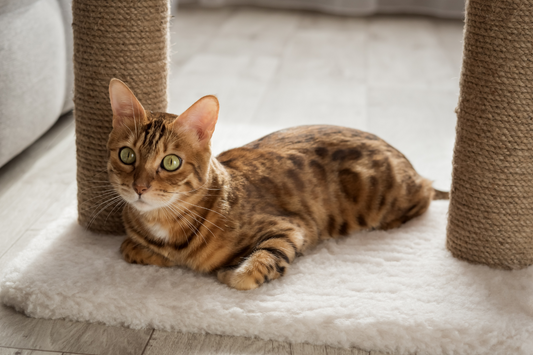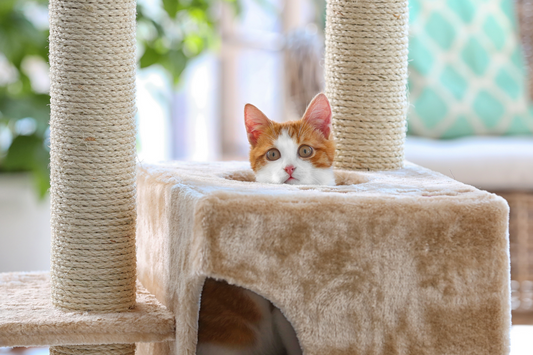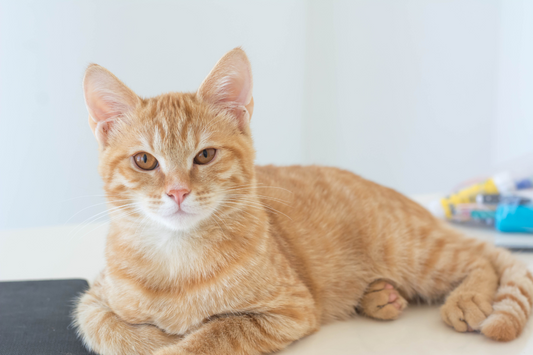
Is your cat’s favorite scratcher starting to stink up the room?
You’re not alone—many pet parents notice an unpleasant odor lingering around their cat’s scratch post over time. That’s because scratchers can trap fur, dander, moisture, and even smells from nearby litter boxes. Left unchecked, these smells can spread, making your home feel less inviting.
The good news? You don’t have to throw it out just yet. With a few simple tips, you can prevent cat scratcher odors and keep your space smelling clean and cozy—for both you and your furry friend.
Why Do Cat Scratchers Start to Smell?
Even though they seem harmless, cat scratchers can become odor magnets. Here's why:
Trapped Fur, Dander, and Dirt: As cats scratch, they leave behind bits of fur, skin, and dust. These particles accumulate and create a musty smell over time.
Moisture Buildup: Humidity or accidental spills can seep into cardboard or carpeted scratchers, causing dampness and mold growth.
Litter Box Proximity: If the scratcher is near the litter area, it can absorb surrounding odors—especially in small, enclosed spaces.
Poor Ventilation: Lack of airflow around the scratcher makes it easier for odors to cling and settle.
How to Prevent Cat Scratcher Odors
Stay ahead of the stink with these proactive measures:
Regular Vacuuming and Brushing
Use a handheld vacuum or brush to remove hair, debris, and dust from the surface weekly. Focus on grooves and corners where dirt hides.
Sun-Drying or Air Circulation
Place the scratcher outside (in shade) or near a window on a dry day. Sunlight helps kill bacteria and reduce musty smells.
Pet-Safe Baking Soda or Vinegar Sprays
Lightly sprinkle baking soda to neutralize odors, or spritz a diluted vinegar mix (1:3 ratio with water) for natural freshness. Let it dry before letting your cat near it again.
Avoid Moisture-Prone Areas
Keep scratchers away from damp spots like bathrooms or kitchen corners.
Cleaning Frequency and Safe Products to Use
Consistency is key when it comes to odor prevention:
Weekly Touch-Ups
A quick vacuum and fur removal every week can do wonders.
Monthly Deep Cleaning
Use a cloth dampened with pet-safe cleaner or a mix of warm water and vinegar. Avoid soaking cardboard or sisal, as it may weaken the material.
Natural, Cat-Safe Products
Look for enzymatic cleaners specifically labeled as pet-safe. Avoid strong scents like bleach or ammonia—cats dislike them, and they can be harmful.
When It’s Time to Replace the Scratcher
Despite your best efforts, sometimes it's time to let go. Here’s how to know:
Persistent Odors That Don’t Fade
If smells linger even after cleaning, it may be embedded in the material.
Mold or Dampness
Any signs of mold, dark spots, or a consistently damp texture mean it’s time for a replacement—for both hygiene and safety.
Structural Breakdown
If your scratcher is falling apart, it can’t function properly and may harbor more bacteria.
Real Pet Parent Tips
“I keep my SHIZHOO scratcher under a ceiling fan, and it’s been odor-free for months!” — Amina R.
“Sprinkling baking soda on the sisal part before vacuuming keeps it fresh. My cat doesn’t mind at all.” — James T.
“After every litter box cleaning, I do a quick vacuum over the scratcher—it’s part of my routine now.” — Sarah M.
These simple, real-life routines can make a big difference—and they’re easy to try today!
Conclusion
Keeping your home fresh and your cat’s favorite scratcher odor-free doesn’t require harsh chemicals or frequent replacements. With regular maintenance, some natural deodorizing methods, and smart placement, you can eliminate smells before they settle in. Your cat will love the clean space—and so will your nose!











